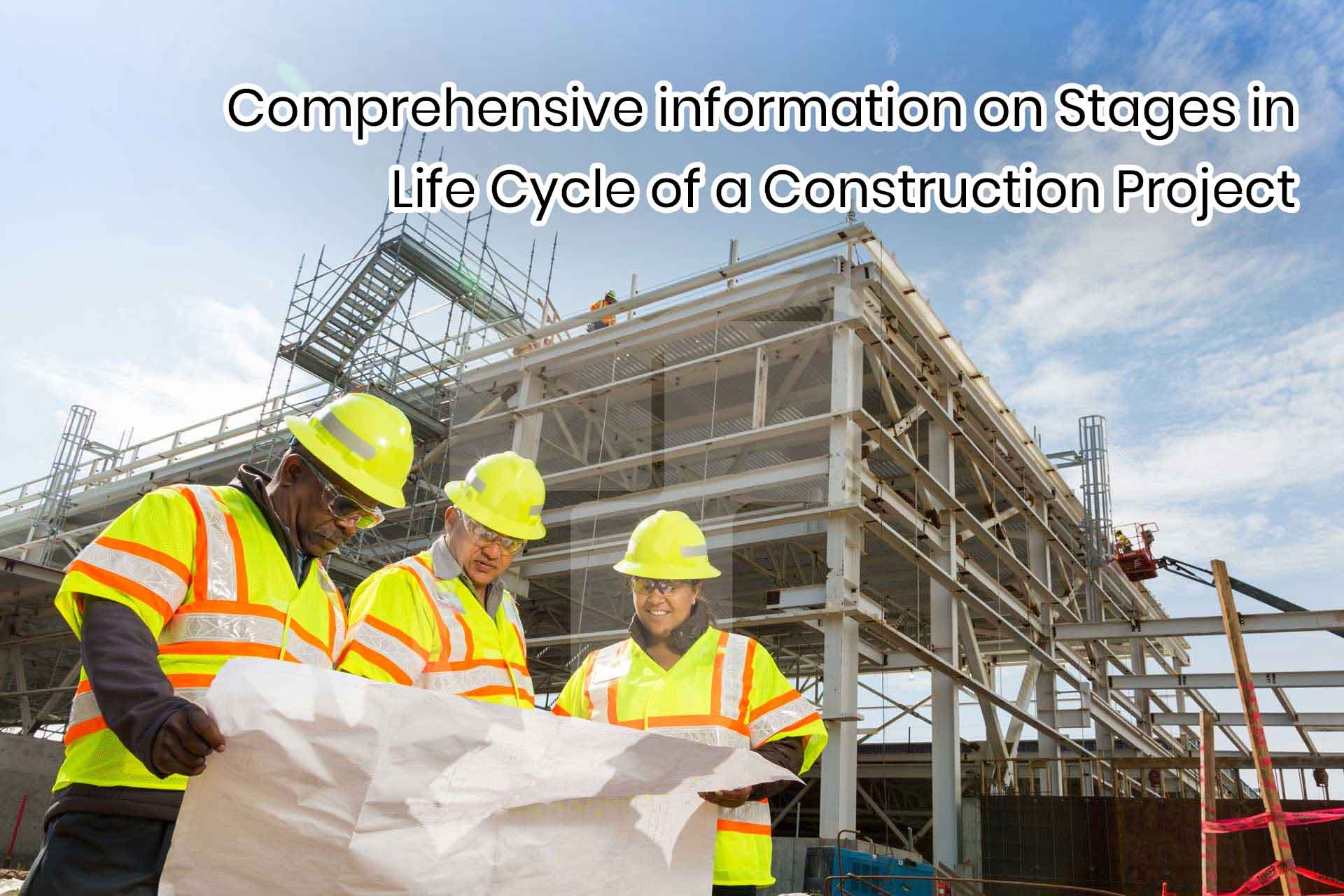Comprehensive information on Stages in Life Cycle of a Construction Project

A construction project is a long and continuous process that demands a review of operations for carrying out the tasks. Project in construction depends upon its size, number of stakeholders involved in the project, cost estimation of material and project, and delivery date. BIM Services that lay out the design process manages it to construction phase is the most vital components in the lifecycle of a project.
A project that produces the development of a new product includes phases such as conceptual, technical feasibility, development, commercial validation, product preparation, full-scale production and product support that work in order and lays efforts to carry the next step.
There are some stages involved in a construction project which can be simple to most complex ones for which certain processes and steps are included to be followed to ensure the effective outcome. Due to continuous development in digital solutions, the management of different phases in a construction project is compactable and with higher accuracy. Collecting valuable data can aid in improving and standardizing the construction process for future projects.
Construction project life-cycle includes six phases such as pre-project decision, planning, and design of the project, selecting the contractor to carry filed operations, construction of the project, and lastly, the project must be terminated and brought to a closure.
The design may help to know the logical way of tracking the project’s activities and understand the role of the construction traders responsible for those activities from the time the project idea is conceived to final site completion of the project.
Stages of a Construction project
Let us look at the stages of a construction project and know what detail they have for the life-cycle of a project:-
Ideation Phase: Concept of the project starts with the client where the actual research about the project begins such as the right location, which standards to be followed, material procurement, cost estimation of material and project, etc. The project from ideation may differ as to timeline of accomplishing the project from a few days can be taken to months or more and ultimately depends upon the project need of completion.
Project objective and feasibility are determined here which can be a business problem or opportunity after a solution is approved implementing the project are easier, and all the project ideation process is intervened by the project manager from where the planning process of the construction project begins.
Planning & Design Phase: Planning and Design stage is the further development of the project in detail to meet the project’s objective where the team members have to identify entire work, tasks, and resources to be worked upon with proper strategy to commence it.
The project manager coordinates for the project planning by estimating the budget implied on labor, equipment, and materials costs, which is led by the scheduling software called as MS project or PRIMAVERA. This, in turn, would let us know the time-frame for the completion of stages in a project.
The budget is monitored and controlled during the project implementation. A document is required to show the quality plan; quality targets are defined, quality assurance, control measures, acceptance plan, and gain customer acceptance is worked upon by planning the project and executing it in detailed.
The design team led by the designers, architects, or an engineer will make sure about the regulations and codes that are met while visioning the project and how built structures will be used. In a construction project, the design process has four steps such as programming and feasibility, schematic design, design development, and contract documents
In the first design step, the goals and objectives of the project are outlined while taking enormous decisions about how large the building will be, how space should be utilized, and how many rooms are needed. The schematic design is a drawing that will show placement and arrangement of objects being placed in design with the material specification, colors, and textures.
The drawing will be used in the design development stage to research about what type of equipment is needed, with its cost and materials that are used in it. Contract documentation is prepared, and everything is put in place to close what specifies in the drawings and specifications. The construction professionals then use the documents for bidding the project.
Pre-construction Phase: Once the project bidding is completed, the contractor is chosen to do the work where the team is put together for work. The project team manages the on-site construction tasks before starting the actual construction work. The project team consists of contractors, project managers, engineers, and health and safety managers.
The project team also has to visit the construction site to examine the construction process and supervise it. Due to which, the issues can be detected related to the environment that can occur during the building process such as soil testing which is an important part of the construction process.
Once all the necessary information is collected, the plans and decision related to this information can be reviewed by concerned authorities where every problem and concerns will be heard and resolved.
Procurement Phase: In this stage, the project team will order and obtain materials, equipment, and workforce which are more complex depending upon the challenges on how big the project is available resources and timeline of the start date.
Each procurement department in the construction company will order laborers, machinery, and materials for their projects. All this process of work is carried out by the general contractor and at times by subcontractors. Sometimes it can happen in the project that the subcontractor can order its workforce or materials as it is required for him to complete the project.
Construction Phase: Before commencing the actual construction work, pre-construction meeting is carried out to know that everyone involved in the construction project is on the same page and discuss about information on how to access the job site, quality control measures to be taken, where the materials can be stored and how many hours the workers will work.
Every worker of the construction project has their schedule, and at times it might vary depending upon the project needs. It is applied to be the subcontractor here, as they want the work to be finished before they begin their part of work. If initial planning is not accurate, it may now lead to cause a delay in the construction projects and overhead the costs.
Planning should be accurate if you don’t want any mistake to happen at the construction site while commencing the project. Use of digital solutions such as BIM 4D Scheduling Services is crucial for estimating the schedule of activities carried out by the worker.
Post-Construction Phase: It is the closure of the construction project after it is completed in this stage. Later, few steps are needed to complete the building process of a project such as inspection of the building is to be done so that any errors can be corrected before handing over the key of the building.
Once the inspection is done, the project team hands over it to the client and make him learn about the operation and maintaining the newly built structures. After the training is completed on the maintenance and operation part, the owner takes the building where it is examined by different systems, equipment, and material that needs to be installed.
Certain warranty is included in the construction such as express warranty that is normally the warranty for the building included in the contract, implied warranty that is imposed by law and statutory warranty that is state’s regulation on standards of the building code.
The project team makes sure that the project is passed through all contractual agreement and is free from any legal burden, any incomplete task can be worked upon, and complete post-project review is carried out.
Conclusion
Every stages or phase in the construction project are a continual process of carrying out tasks, decisions, and numerous tools to be used in the completion of the project. All the stages might be complex more or less depending upon its size and what type of project it is.
What is important in the construction project is an accurate decision on facts and communication between the stakeholders can streamline the phases to depict the timeframe and budget to complete the project.
With the progress of digital solutions, mainly BIM Modeling Services, is implemented and planned wisely in the construction project to aid in scheduling activities and cost estimation activities to execute the construction process.

